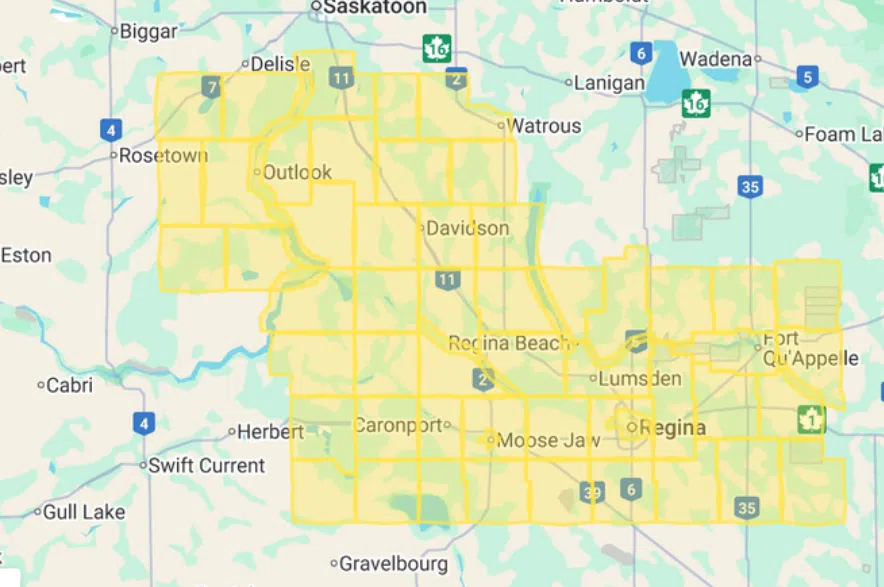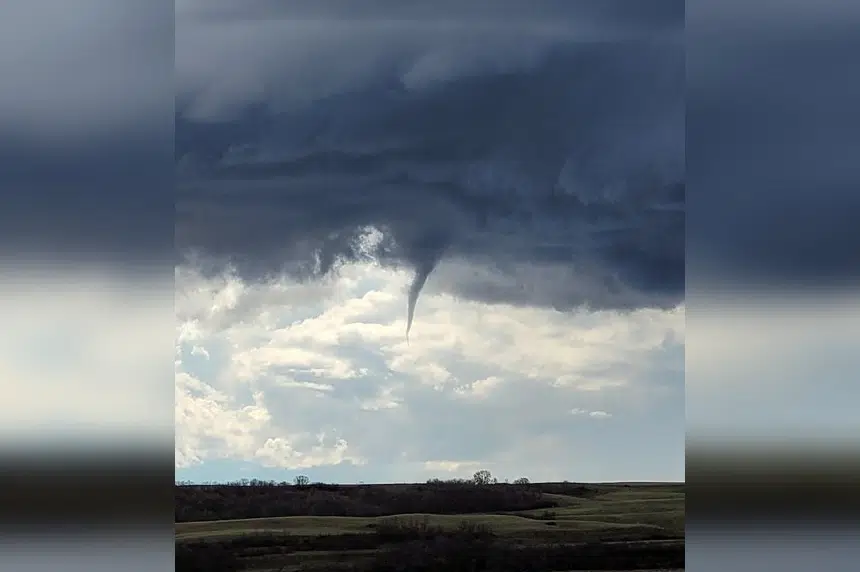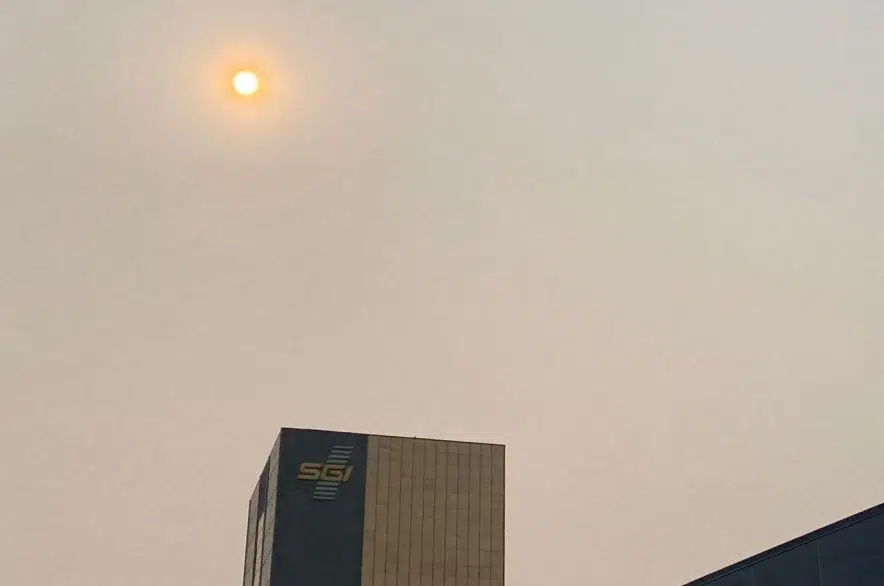Smoke from Saskatchewan’s wildfires is causing poor air quality and reduced visibility in many south-central areas of the province.
SaskAlert and Environment Canada both said on Saturday that a narrow plume of concentrated smoke has stalled along the Highway 11 corridor but it expected air quality conditions to gradually on Saturday night. AQHI readings of 10+ were recorded in the area on Saturday afternoon.
Read more:
- Saskatchewan’s massive Shoe Fire still only 68 per cent contained: SPSA
- One taken to hospital after crane collapses at construction site in Saskatoon
- Prevention is key against Dutch Elm disease: Rick Van Duyvendyk on Greg Morgan
The AQHI scale measures the air quality in relation to health on a scale from 1 to 10. The higher the number, the greater the health risk associated with the air quality. When the amount of air pollution is very high, the number will be reported as 10+.

The area covered by air quality alerts in Saskatchewan on July 5.(Sask Alert)
Environment Canada says that air quality and reduced visibility due to wildfire smoke can fluctuate over short distances and can vary considerably from hour to hour.
“Wildfire smoke can be harmful to everyone’s health even at low concentrations,” the alerts say.
“People with lung disease (such as asthma) or heart disease, older adults, children, pregnant people and people who work outdoors are at higher risk of experiencing health effects caused by wildfire smoke.”
ECCC said people may experience mild and common symptoms such as eye, nose and throat irritation, headaches or a mild cough and anyone experiencing shortness of breath, wheezing, severe cough, dizziness or chest pains should stop outdoor activities and contact a health care provider.
They advise that when indoors, people should keep windows and doors closed as much as possible and to protect indoor air from wildfire smoke by using a clean, good quality air filter in your ventilation system or a portable air cleaner that can filter fine particles.
Both agencies said people should limit time outdoors as much as possible, and wearing a well-constructed, well-fitting and properly worn respirator type mask (such as a NIOSH-certified N95 or equivalent respirator) can reduce exposure to fine particles in the smoke. Even though exposure may be reduced, there can still be risks to health.
People more likely to be impacted by outdoor air pollution include those aged 65 and older, pregnant people, infants and young children, people with an existing illness or chronic health condition, and people who work outdoors, should reduce or reschedule strenuous activities outdoors and seek medical attention if experiencing symptoms.
People should call HealthLine 811 for advice on health risks, symptoms and precautions associated with air quality.
More information on air quality alerts for specific areas of the province is available at weather.gc.ca.
Information is also available on the Saskatchewan Public Service Agency website at saskpublicsafety.ca and the SaskAlert app. The provincial air quality summary for Saskatchewan can be found here.

Funnel cloud spotted near Bethune in 2022 (grammarae1/X)
Funnel clouds possible, Environment Canada says
As well, Environment Canada said that conditions would also be favourable for the development of funnel clouds in many parts of Saskatchewan Saturday afternoon.
The special weather statement included the RMs of Bone Creek, including Simmie and Scotsguard; Frontier, including Frontier and Claydon; Glen McPherson west of Mankota; Grassy Creek, including Shaunavon; Lone Tree, including Climax and Bracken; Mankota, including Mankota and Ferland; Maple Creek, including Cypress Hills Prov. Park and Maple Creek; Pinto Creek, including Kincaid and Hazenmore; Reno, including Consul Robsart and Willow Creek; Val Marie, including Val Marie, Orkney and Monchy; White Valley, including Eastend and Ravenscrag; and Wise Creek, including Cadillac and Admiral.
It said that funnel clouds are generated by weak rotation under rapidly growing clouds or weak thunderstorms. This weak rotation is normally not a danger near the ground. However, there is a chance that this rotation could intensify and become a weak landspout tornado.
If conditions become more favourable for the development of landspout tornadoes, watches and warnings will be issued, it said.
Landspout tornadoes do not usually cause significant damage but can still be dangerous. They can be strong enough to topple trees, damage roofs or toss debris short distances.
Read more:











